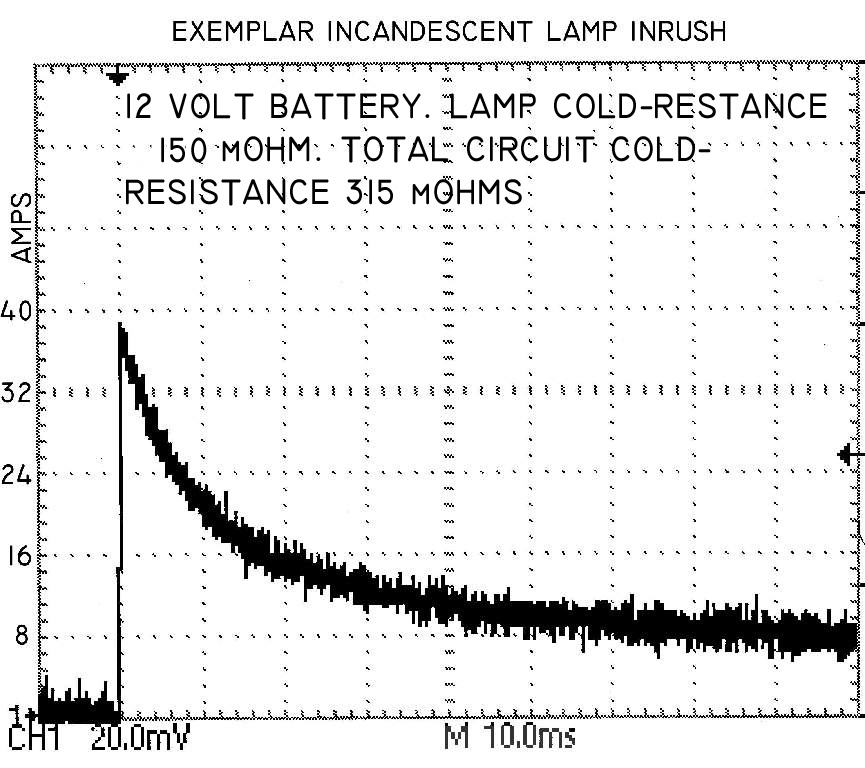CS 34 - Project Proposal
Ray Di Ciaccio
Yoon-ki Park
Classifying Inrush Currents for Device Identification
Introduction | Project Goal | Methods | Timeline | References

Image from http://www.aeroelectric.com/Pictures/Curves/Exemplar_Incandescent_Lamp_Inrush.gif
Introduction:
Current inrush is a phenomenon that occurs when certain devices are switched on. A spike in current during the switching on of an electronic device happens because components in these devices (i.e. heating elements, transformers, motors) have very low impedance until they reach their normal operational conditions. An incandescent light bulb, for example, has very low impedance when the tungsten element is cold but once it is switched on, the element heats up in a matter of milliseconds and the impedance increases dramatically. The way in which the impedance settles to its steady state is unique to the light, transformer or motor and can provide a fingerprint for identifying the device.
-top-
Project Goal:
Our goal is to classify different inrush current decay curves so as to determine the type of device. For example, we might want to identify when a 60-watt incandescent light-bulb is turned on or when a 13-watt halogen light-bulb (60-watt incandescent equivalent) is turned on (by recognizing the inrush curve).
-top-
Methods:
- Pre-process the data to remove any data before the max-point in the inrush current curve. This way we are only looking at the decay of the curve, for which we can use regression. We would receive bad values if we tried to use regression on the set of points including the nearly instantaneous surge in current.
- Scale the training and test data so that the maximum value is at 1 and the steady-state of the curve is at 0. This will compensate for differences in actual current draw among devices of the same type.
- Use locally-weighted linear regression to calculate θ for input curve.
- Use the θ as the feature vector for classification using logistic regression.
-top-
Project Timeline:
These should be done by the milestone:
May 1: All datasets compiled.
May 9: Regression aspect implemented. Write milestone document.
May 12: Finish milestone write-up.
These should be done after the milestone:
May 20: Logistic regression aspect done.
May 27: Everything together and working. Start writing and working on poster.
May 31: Finish final write-up and poster.
-top-
References:
Bollen, M. H. J., & Gu, I. Y.-H. (2006). Signal processing of power quality disturbances. IEEE Press series on power engineering. Piscataway, NJ: IEEE Press.
Karsmakers, P., Pelckmans, K., Suykens, J. A. K., & Kempen, K. H. (2007). Multi-class kernel logistic regression: A fixed-size implementation. Paper presented at the IJCNN 2007. International Joint Conference on Neural Networks, 2007. 1756-1761.
-top-
